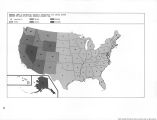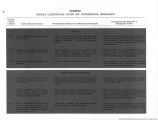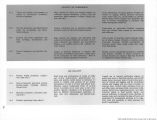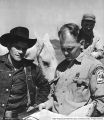| OCR Text |
Show land should be made to determine which route is most feasible for an easement and least disruptive to the future use of the land by the purchaser. The easement should then be surveyed and precisely described in the instrument of transfer. Lands disposed of for grazing purposes should be on conditions designed to minimize land speculation. Selling the lands at market value will not only help to assure that they are put to their highest and best use, it will also reduce speculation. However, additional measures should also be taken. To some extent, the problem of speculative purchases will be alleviated by a careful selection of the lands that are designated for disposal. But if lands are identified for disposal because their chief value is grazing, then there should be some assurance that, for at least a reasonable period of time, they will be used for that purpose. We, therefore, recommend the imposition of use restrictions which, if violated, could subject the title holder to injunctive action or to reversion of the title. Thus, a use or threatened use of the land for a purpose other than grazing could be enjoined during a reasonable period of restriction. The land should not, however, be kept frozen forever in one use because changing conditions will demand different uses. Grazing as a Dominant Use on Retained Lands Few statutory guidelines exist for allocating public land resources between domestic livestock and other uses. Without such guidelines the range manager is hindered in fixing the limits of competing use. The result is that pressures, unrelated to the true capabilities of the land, may be the determining factors in allocation of the land. This situation will be corrected, in our view, by classifying for grazing as the dominant use those lands retained in Federal ownership and identified as being chiefly valuable for grazing of domestic livestock. Classification of lands chiefly valuable for grazing as dominant grazing use areas does not mean that other uses would be eliminated. It would, however, give the land managers a more precise basis upon which to allocate the land resources among competing uses. If the accommodation of competing use requires reduction in grazing, the manager would have a more meaningful standard for determining the necessary adjustment. Furthermore, the classification would give the livestock industry assurance that the land would not be shifted to another use, at least until such time as there is a clear, technically supportable determination that the lands are no longer chiefly valuable for grazing. Historically, all public lands which could be physically negotiated by livestock have been grazed. Lands with steep topography and unsuitable soils, as well as 116 lands in delicate ecological balance have been subjected to such use. Failure to recognize the limitations imposed by nature on lands of this sort has caused extensive damage to property and other resources and has required massive expenditures for rehabilitation. The results have not been desirable for either the livestock operators or society. Such frail and deteriorated lands should be identified, as well as those chiefly valuable for grazing. Once identified they should be classified as lands not suitable for grazing, and we recommend that grazing in such areas should be prohibited to the fullest extent practicable. Control of Competing Uses Recommendation 43: Control should be asserted over public access to and the use of retained public grazing lands for non grazing uses in order to avoid unreasonable interference with authorized livestock use. The public lands are generally open to unrestricted public use. Many areas that are suitable for domestic livestock grazing are also capable of supporting other uses, and a portion of Federal investments in these lands goes to the benefit of non-grazing uses. The degree of interference among competing uses varies. Much of the grazing land is unsuitable for any other use; some of it, however, is susceptible to mineral production and many areas support game and may be used for recreation. For example, of the total public land area which has been withdrawn or reserved for recreation purposes, grazing is permitted on approximately one-fourth of the area. The use of forage resources on public land by wildlife species has increased sharply over the past few years. Game use on the national forests has in recent years surpassed the use made by domestic livestock, and the game use of lands managed by the Bureau of Land Management more than doubled between 1947 and 1967. Pressures on public lands for non-grazing use have inevitably led to conflicts between permittees and other users. Wherever possible, a balance between competing uses of public lands which is fair to all users must be achieved. Resolution of the conflict between grazing and other use will be largely dependent upon public understanding and acceptance of reasonable ground rules governing use. There are, for example, certain times, such as periods of drought, when unrestricted hunting or recreation use offers a real threat to the forage source. On the other hand, ranchers often close the permitted lands to such uses without legal authority. |







































































































































































































































































































































































